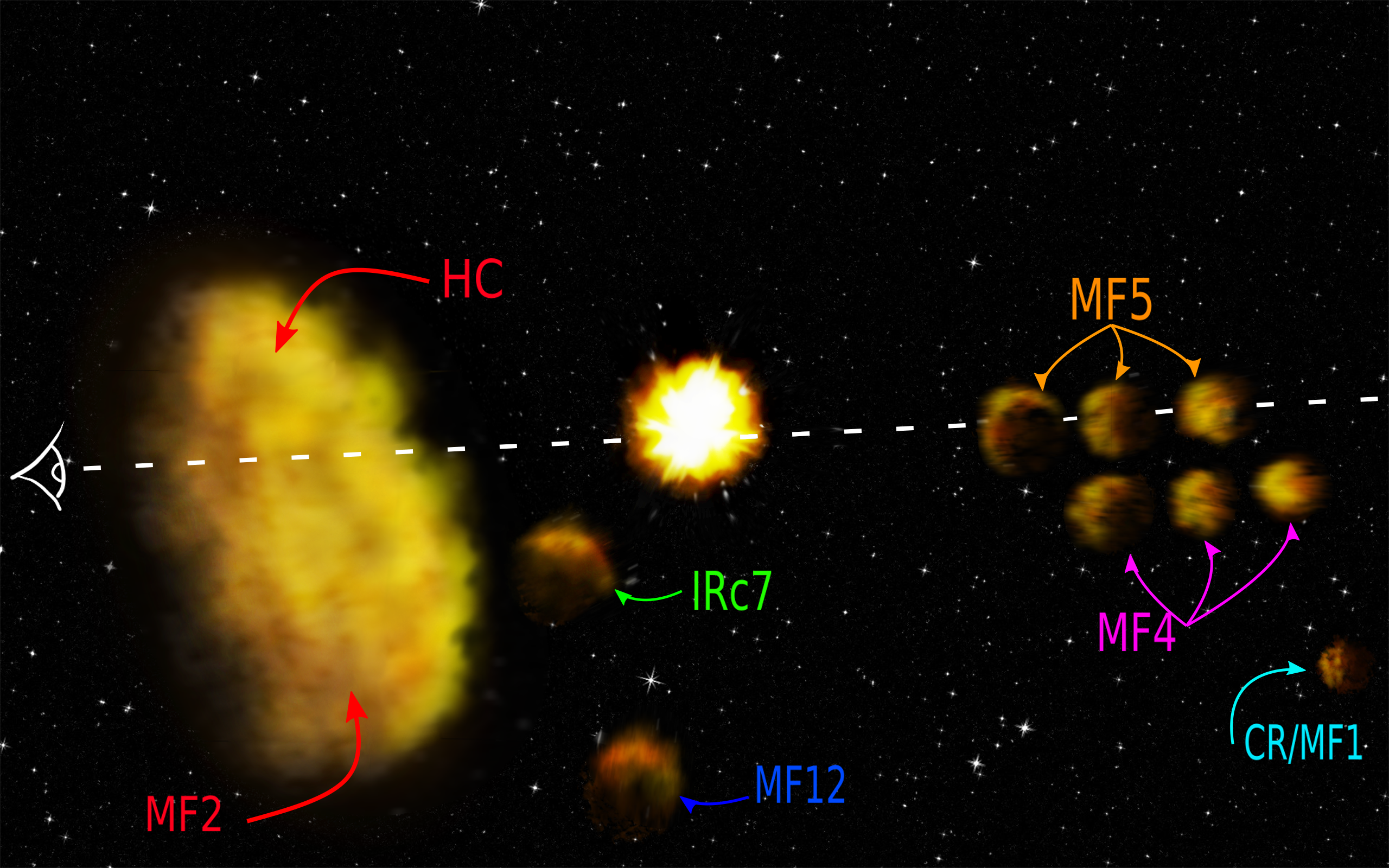
3D sketch of the Orion KL region seen from the side (DR Colin Pagani)
ALMA observations of Orion-KL offer a beam cleanliness and signal to noise ratio of unprecedented quality. Not only can we detect new molecules thanks to the separation of sources at different velocities which otherwise overlap when included in the same beam, but we have been able to decipher a part of the structural and dynamical enigma around this region. The picture above is derived from our new understanding of the region structure. It is a side view. The yellow spot in the center represents the explosion which occured 500 to 700 years ago which is traced by H2 and CO images and by the three runaway stars, BN, I and x (which has replaced n recently, see Luhman et al. 2017). In this picture most clumps are in between the Earth and the explosion center and are receding from the center towards us, slowly pushed away by the explosion. MF4 and MF5 are behind and going away but even more, they are composed of several small clumps which are all receding at different velocities, the faster ones being the farther away. The compact ridge seems to be completely disconnected from the rest and is therefore represented at the edge of the region. It is probably 10,000 au behind the center of the region. More work is going to come. . . Stay tuned!
Main publications:
Pagani, L., Favre, C., Goldsmith, P.F., Bergin, E.A., Snell, R., Melnick, G., 2017, A&A, 604, A32,The complexity of Orion: an ALMA view I. Data and first results
Favre, C., Pagani, L., Goldsmith, P.F., Bergin, E.A., Carvajal, M., Kleiner, I., Melnick, G., Snell, R., 2017, A&A, 604, L2,The complexity of Orion: an ALMA view II. gGg'-Ethylene Glycol and Acetic Acid
Pagani, L., Bergin, E.A., Goldsmith, P.F., Melnick, G., Snell, R., Favre, C., 2019, A&A, 624, L5,The complexity of Orion: an ALMA view III. The explosion impact